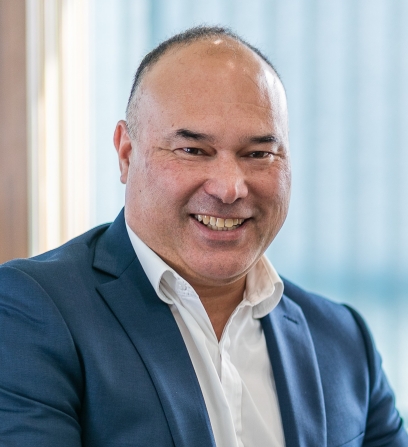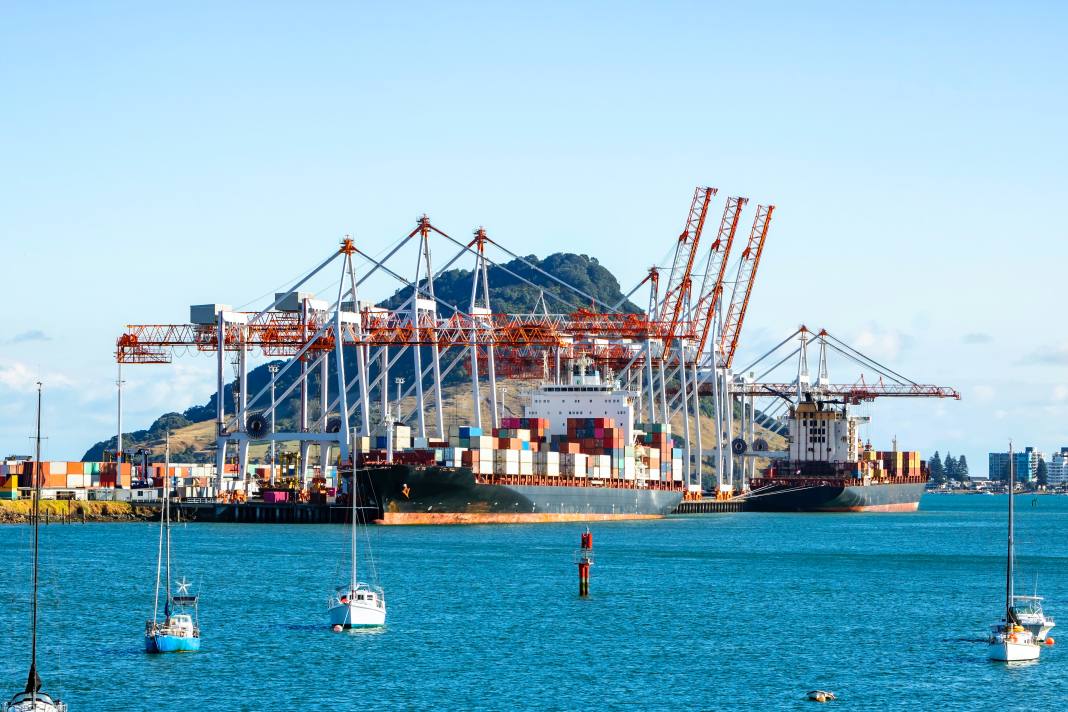Port of Tauranga is embarking on its next stage of capacity growth to enhance New Zealand’s connectivity with the world. After a year and a half of pandemic-related disruption, the Port is planning ahead to preserve market access for importers and exporters based in the Bay of Plenty and beyond.
Port of Tauranga Chief Executive, Leonard Sampson, says three significant initiatives are helping the company prepare for the future.

Chief Executive Officer,
Port of Tauranga
The first to fruition will be the inland port under construction at the Ruakura Superhub logistics and industrial precinct near central Hamilton. The inland port is a 50/50 joint venture between Port of Tauranga and the Superhub’s owners and developers, Tainui Group Holdings.
The inland port will allow shippers to store and aggregate cargo for the “big ship” container services calling at Tauranga, while avoiding creating bottlenecks. The nine-hectare first stage is due to open in mid-2022 and future stages will see it grow to around 30 hectares. It will have two 800 metre rail sidings of the East Coast Main Trunk rail line.
Mr Sampson says Port of Tauranga is investing in the development for economic, social and environmental reasons.
“The Superhub and inland port will help us better service importers and exporters in the Auckland and Waikato regions utilising the existing rail network,” he says.
Port of Tauranga’s other two initiatives involve extending capacity at the Tauranga Container Terminal by extending the berth to the south of the existing wharves, and automating the adjacent container storage area with electric stacking cranes. The developments will allow the Port to increase capacity without expanding beyond its current footprint.
Port of Tauranga has applied for resource consent for the berth extension project. The $68.5 million first stage will create an estimated 368 jobs through the construction phase, and more than 81 permanent jobs after completion.
Mr Sampson says the project is of national significance. “It will bring urgently needed capacity and resilience to New Zealand’s supply chain,” he says. “We wish the process for gaining a consent didn’t take so long, but we are hopeful we can bring some much-needed capacity to the system before too long.”
In the meantime, the Port is doing what it can to relieve supply chain congestion.
The Covid-19 pandemic has caused widespread disruption to the international supply chain, through surging consumer demand and interrupted production cycles.
“We’ve worked really hard with our partners such as KiwiRail to increase the cargo volumes we can currently handle. In May, we were able to increase our train programme between Tauranga and Auckland from 72 trains to around 92 trains per week,” he says.
Mr Sampson says a pandemic-prompted container vessel building boom is under way and is likely to accelerate the trend towards fewer but larger vessels calling in New Zealand.
Bigger ships have the advantage of being more fuel efficient and have a lower carbon footprint.
“By far the biggest proportion of carbon emissions in New Zealand’s container supply chain relates to the blue water of ocean-going component of the cargo journey,” says Mr Sampson.“Landside emissions from road or rail transport contribute only a small percentage of the total carbon emissions related to container imports and exports.
“Port of Tauranga is the only New Zealand port able to handle larger container vessels.”
Meanwhile, Port of Tauranga continues to build relationships with customers, business partners and the community to ensure its ongoing success.
“We are very proud of the wide-reaching benefits that the Port brings to the Bay of Plenty. As well as the jobs associated with the Port and other businesses, we have invested in community infrastructure,” says Mr Sampson.
More than half of Port of Tauranga’s shares are owned by local ratepayers. The company’s cornerstone shareholder is Quayside Holdings, the investment arm of the Bay of Plenty Regional Council.
Quayside has received dividends of more than $905 million in total since Port of Tauranga was listed on the stock exchange in 1992. Dividends paid by Quayside represent around 25% of the Council’s annual income.
Quayside has also used its shareholding to establish a $200 million infrastructure fund that has helped pay for regional assets.
Apart from the dividends, Port of Tauranga has invested directly in many community projects, including sponsoring the construction of the Pilot Bay boardwalk, upgrades to the walking tracks on Mauao and the installation of lights at the Bay Oval cricket ground.
Mr Sampson, who took over the role of Chief Executive in July 2021, says he is looking forward to growing the partnerships that contribute to community wellbeing, such as the Port’s new sponsorship of the 2022 National Jazz Festival in Tauranga.
“We’re very pleased to lend our support to ensure the festival continues to entertain and uplift thousands of locals and visitors while bringing economic benefit to our region.”
Read more: Port of Tauranga – New Zealand’s biggest international cargo gateway












